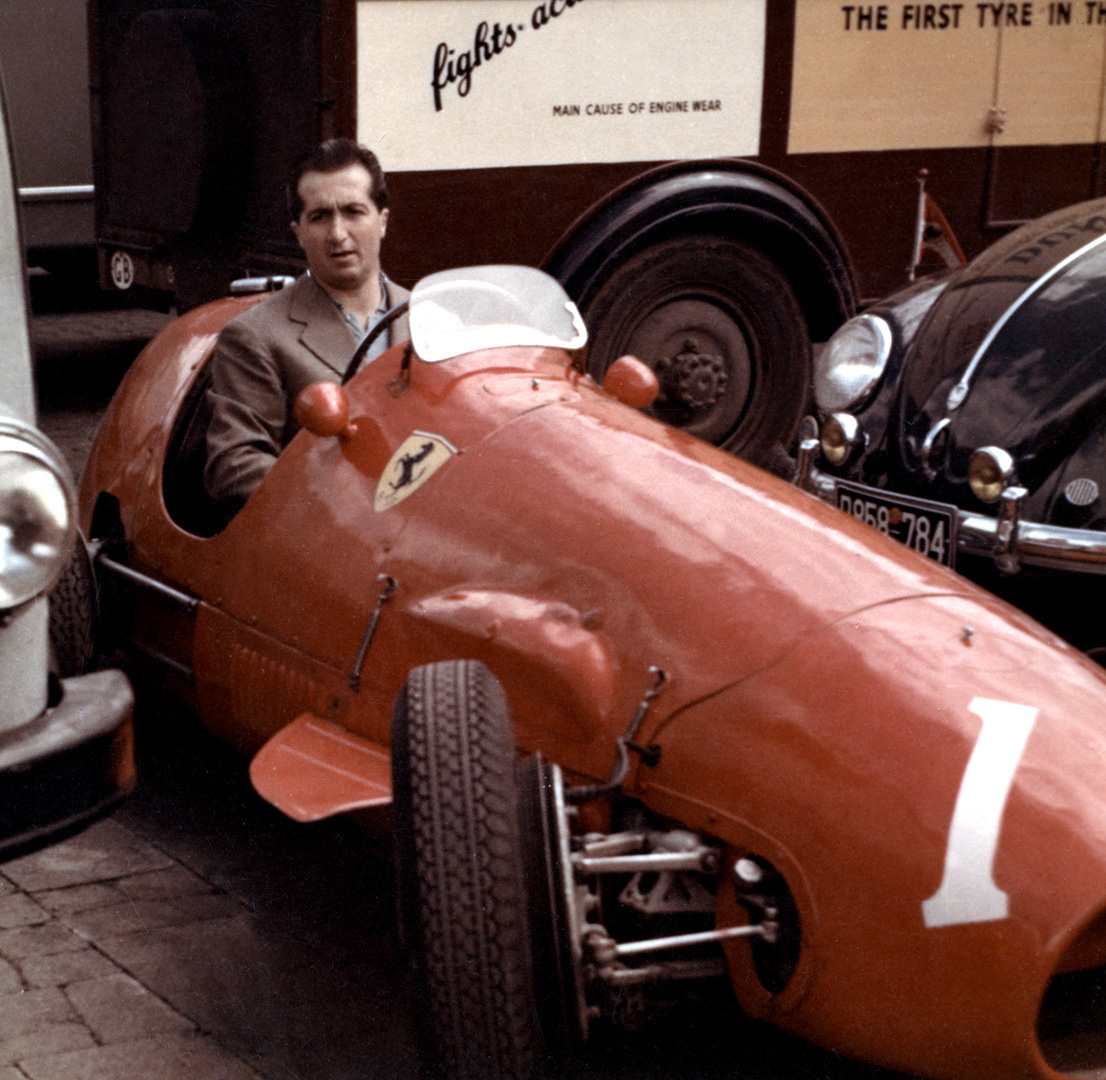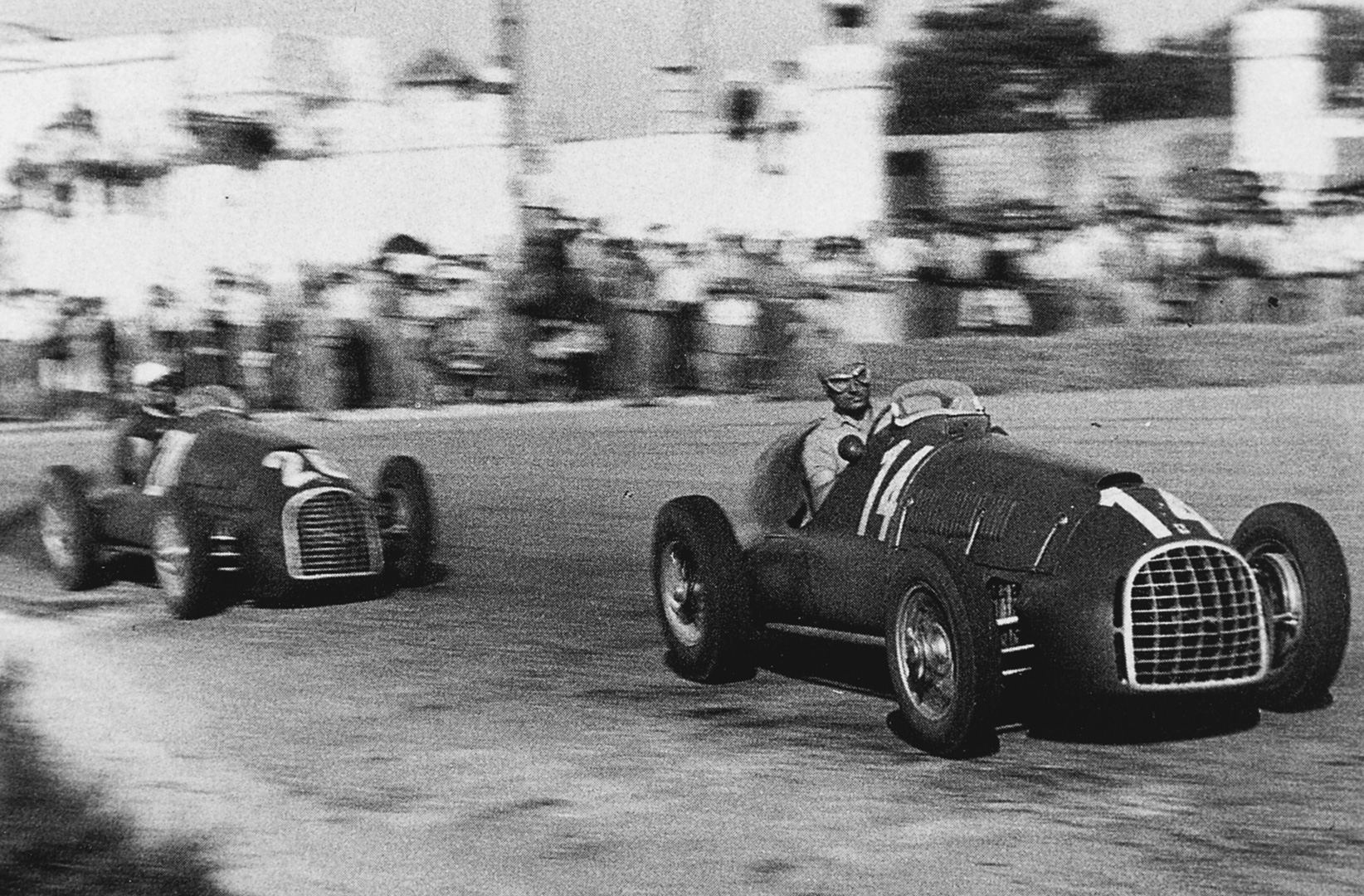
Scuderia Ferrari Hero
Alberto Ascari

no other Italian driver was able to follow in the footsteps of the great Alberto Ascari
It was Enzo Ferrari who introduced Alberto Ascari to motorsports. It was the year 1940 when Ferrari himself called Alberto who was driving for Auto Avio Costruzioni, dubbed this after the stormy divorce of Ferrari and the house from Portello.

The event Enzo Ferrari wanted Alberto to race in with one of his cars was the Mille Miglia, where Ascari eventually took part with a 815 prepared by the Carrozzeria Touring in Milan. Right from this debut behind the wheel of the small 8-cylinder with a mere 1,500 cc one could see that this driver from Milan was incredible. The following races, before all motorsports events came to a halt due to the Second World War, confirmed this.

During the short last stint of the 1947 season Alberto won his first race, at the Modena circuit, in front of an extremely satisfied Enzo Ferrari. On 27th May 1949 Ferrari officially announced the transfer of the man who seemed to be one of the most promising in Italian motorsports.
On 12th June Ascari had his debut at the Bari GP with a breathtaking victory, followed by another four cars from the Prancing Horse. In the same year the man from Milan had his debut behind the wheel of a Formula One single-seater, a new and at the same time the highest class in motorsports, with new rules and the desire to compare engine performance and aerodynamics on the race tracks.

“Ciccio”, that’s how his fellow countrymen called him, reaped a series of enormous victories: Swiss Formula One GP, followed by Silverstone and Monza. After a good start of the F1 series in 1950, in 1952 he gained the Drivers’ World Title behind the wheel of a 500 F2, repeated in ’53 with a series of fabulous victories. After the horrible accident at the Monaco GP in 1955, where Ascari escaped unharmed, he was involved in another accident at the Autodromo of Monza, this time fatal. While he followed the test sessions of his friend Castellotti from the side of the track, he could not resist sitting behind the wheel of a Ferrari for a couple of laps. But something didn’t work properly and we will never find out exactly what. Still today, rumour has it that it may have been a race steward crossing the track, but this is just a rumour. What is certain is that the bend named after him at Monza, his charm and his manner, made him one of the most popular drivers in history of motorsports and in the history of Formula One. Still today no other Italian driver was able to follow in the footsteps of the great Alberto Ascari.


ALBERTO ASCARI
- 13 July 1918Born
- ITALYCountry
- 17total podiums
- 13retirements
- 1803laps
- 12fastest laps
- 140.14points
- 2drivers' titles

375 F1
The cylinder capacity of the aspirated engine was brought to the limit of the regulations with 4493 cc in time for the Italian GP at Monza on 2 September 1950, where Ascari finished second.
- ALBERTO'S CHAMPIONSHIPS
- CARRER
- STANDINGS
- SINGLESEATERS



